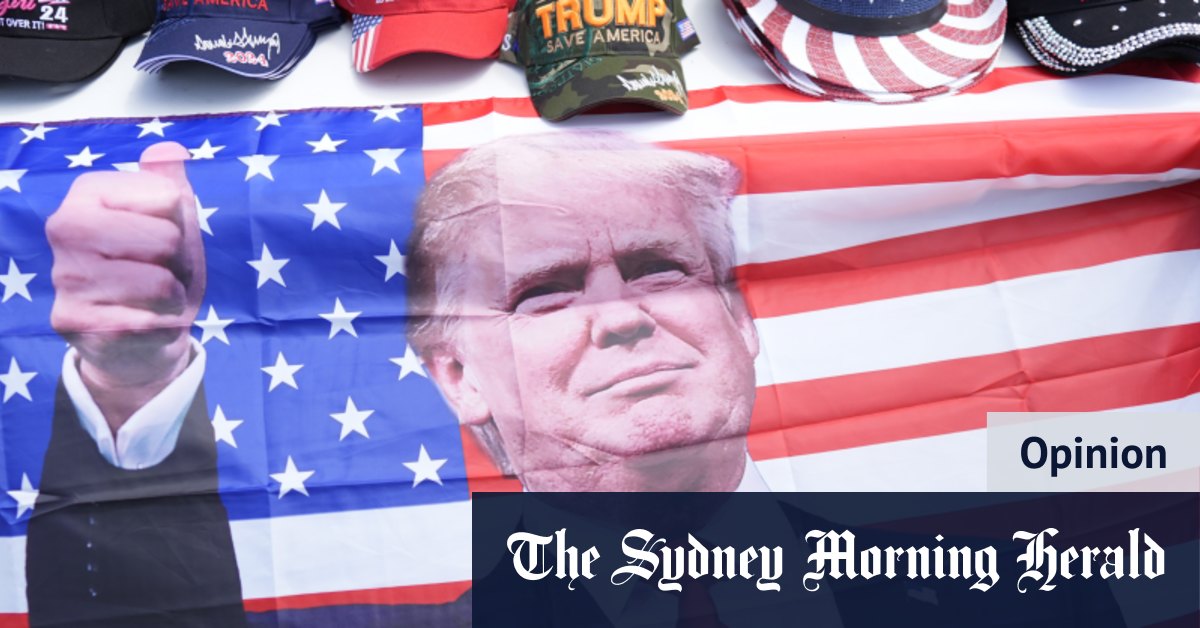Investors were buying shorter-maturity securities, with the demand pushing yields down while selling longer-dated bonds, pushing their yields (which have an inverse relationship with bond prices) up.
Loading
In the near term, that trend might be reversed as the shooting marked the moment the latent potential for violence in the highly charged US election climate became a reality. The bond market is the world’s haven for investors during periods of uncertainty.
Longer term, particularly if the combination of the debate’s exposing of Biden’s frailty and the weekend’s shooting strengthen the odds of a Republican sweep of Congress at the election, the steepening of the yield curve could be expected to resume.
The strengthened prospect of another Trump presidency could put the Fed in an uncomfortable position.
It is winning its war on inflation, which peaked at 9.1 per cent in mid-2022. Last week’s inflation data showed the headline inflation rate is now down to 3 per cent, year-on-year, and “core” inflation (excluding food and fuel) has been cut to 3.3 per cent.
Significantly, “shelter” or housing-related costs, which have been a stubbornly large influence over the inflation rate, have finally started to ease.
Donald Trump has made it clear that he doesn’t trust the Fed’s chair, Jerome Powell.Credit: Bloomberg
In the aftermath of last Thursday’s inflation report, futures markets were pricing in a near-100 per cent chance of two rate cuts this year, with the first 25 basis point cut pencilled in for September. The possibility of three rate reductions isn’t being dismissed.
The Fed has steadfastly proclaimed and displayed that it is apolitical. In normal circumstances, the proximity of an election wouldn’t deter it from cutting – or increasing – its policy rate. That’s why the inflation report would have been good news for an otherwise beleaguered Biden had the shooting not occurred.
If Trump does win in November, implements the wide-ranging and quite radical agenda Republican think tanks have mapped out in detail for an incoming Trump administration and a new outbreak of inflation is ignited, however, the Fed – if left alone – would have to begin another rate-raising cycle in response.
Loading
It would damage the Fed’s credibility, the US economy and US financial markets if it were cutting rates this year and then raising them next year, but that outcome might be unavoidable if Trump is in a position to do what he says he wants to do.
Trump has made it clear that he doesn’t trust the Fed’s chair, Jerome Powell.
Earlier this year, he accused him of being “political” and said he thought he would do something this year – cut interest rates – to help Biden and the Democrats. He said that when Powell’s term as chair ended in 2026, he wouldn’t reappoint him.
Trump threatened to sack Powell during his last term, when the Fed was raising US rates but discovered he didn’t have the authority to do that. He also tried, but failed, to stack the Fed Board with his own (rather eccentric) nominees.
It is unclear whether, despite the quite detailed plans put together by former Trump White House officials, a new administration would have the power to gain the influence or control over the Fed that Trump failed to exert in his first term. If he regains the presidency and the Republicans get control of both chambers of Congress, however, he might be in a stronger position to assert authority over the Fed.
Any move to undermine the US central bank’s independence would risk chaos in the US bond market and probably see a major sell-off of the US dollar, although those outcomes might flow from the Trump economic and trade agenda anyway, even if the Fed does manage to retain its independence.
The Business Briefing newsletter delivers major stories, exclusive coverage and expert opinion. Sign up to get it every weekday morning.

